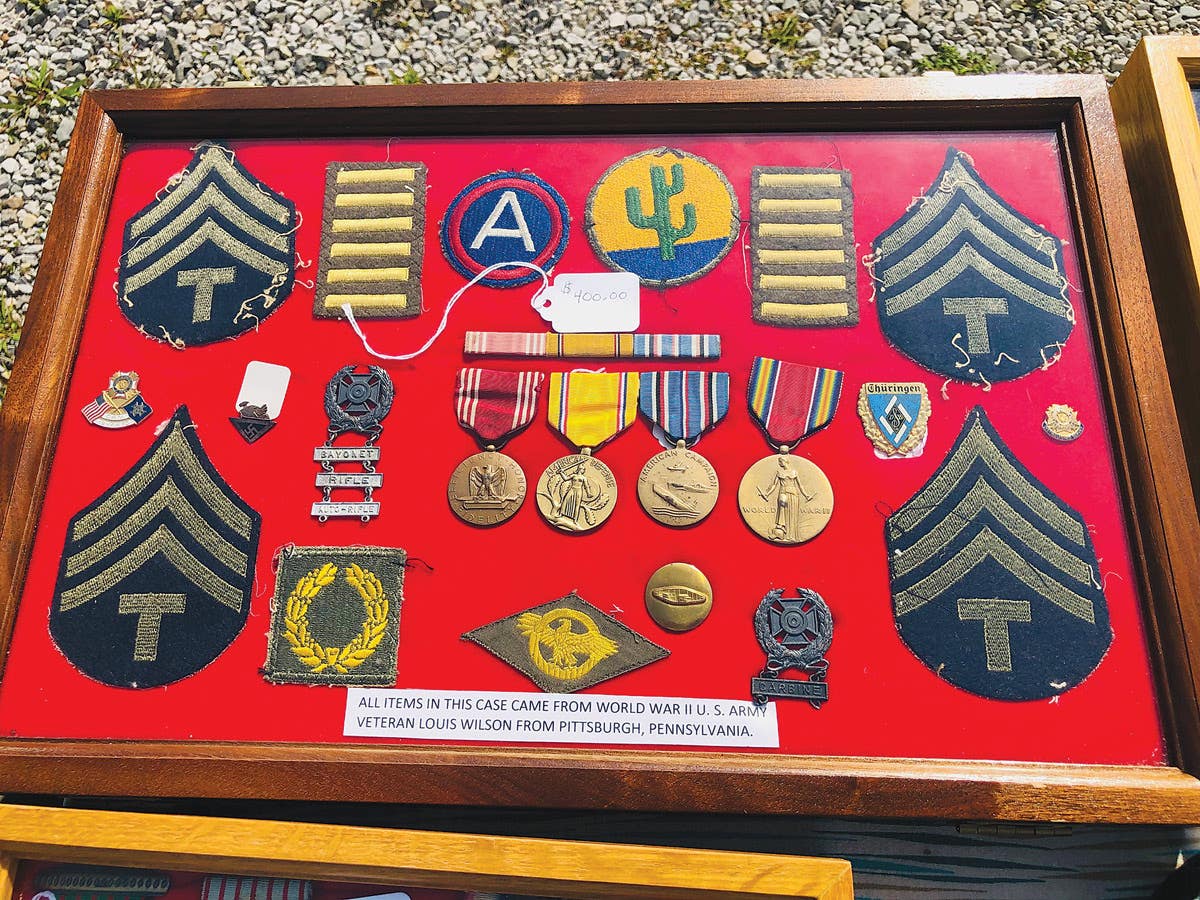Beware of ‘too much information’ when it comes to sharing your militaria collection online
In our ever changing world environment it is prudent to be mindful of what is shared, for context and interpretation are not a given. In the world of militaria collecting it is smart to keep yourself safe online and not become a victim.
As a lifelong collector, but also a professional writer and researcher, I’m extremely partial to sharing information. But as I’ve said in the past, I find some collectors who are “writing a book” or working on another project to save their findings act as if their secrets will change the world.
For the record, nothing in the world of militaria will change the world. As I also wrote in the past, I try to get the knowledge out there because it is good for the collecting hobby. I’ve learned that sharing new revelations or insight isn’t going to make a book or other project less desirable down the line. It can also spur interest in items that may have been overlooked.
On the other hand, I’ve come to find that an increasing number of collectors may be sharing “too much information” these days, and it could result in dire consequences for them, and perhaps even for the hobby. I’m talking about those collectors who provide too many details about their collections on social media.
I understand why people do it. There is satisfaction in sharing a purchase with friends and colleagues. It is rewarding to hear praise (and even envy) from others. Yet, those who share on various Facebook Groups, Reddit, and other platforms can also expect that their posts will be met with some criticism. There are simply those people who like bringing conflict when they can, and sometimes they don’t even mean to. That’s a topic I’ve also touched on in the past and one that likely isn’t getting better. While some are trolls, the internet is filled with “experts” who insist they know everything.
Post about your collection long enough on Facebook and, sure enough, you’ll encounter those individuals. Trust me, it won’t be pretty.
The Wave of YouTube Stars And Social Media Influencers
As a reporter, I actually cover social media for Forbes.com, where I regularly talk to industry analysts and academics, read the latest studies, and hear the pitches from the companies on how their platform could be the next big thing. An interesting report from about two years ago found that as many as three-quarters of Generation Z (today’s young adults) aspired to be social media influencers.
For those who don’t follow these trends, influencers are essentially individuals who post videos and photos praising a new product, brand, or even lifestyle. Others will post about their fabulous vacations, nights out on the town, and generally how modern consumerism has given them the perfect life. In other words, they’re modern BS artists. Studies have further warned those who follow the high-profile influencers can tend to feel bad because their lives simply don’t compare.
And yes, that’s what three-quarters of today’s young adults would like to see as their future careers!
Now, few want to be military collectible influencers, but the hobby has still seen an influx of individuals who post videos on YouTube from collectible shows large and small, highlighting new finds, sharing details about particular items, and more. This is no different from the world of baseball card collecting, classic car shows, and other hobbies that have similar events. It is probably a good thing for each of those hobbies. I use the word “probably” because no formal study has been conducted.
Yet, a lack of context remains a serious problem for those who create such militaria-related content for YouTube, Facebook, Instagram, and other platforms. The biggest controversy a classic car collector will likely get into is whether a Ford is cooler than a GM, or if foreign cars are better than American-made.
In the world of our hobby, it might seem “cool” to other collectors to see those reports from the latest show with photos or videos of rows of SA daggers from the Third Reich. The same is true of photos or videos from the latest reenactment.
To collectors of this hobby and those reenactors, it is just another day at the races. But not everyone sees it that way.
Whether we like it or not, the world has changed and continues to change. We need only be reminded that Disney puts warnings at the start of classic films on its streaming service that some of the content may upset today’s sensitive audiences. Before anyone responds “I hate this woke agenda,” I’m just the messenger and stating a fact.
Moreover, Facebook and other services have clear rules on the posting of items from the Third Reich — ones that a lot of people in the hobby all too often make clear they don’t agree with. Again, that’s just a fact. This is something that isn’t going to get better. That’s another fact.
The point remains that you won’t change the minds of those who are offended any more than they’re going to make everyone agree that Disney’s trigger warnings are remotely necessary. What is different is those who may be offended are often tech-savvy – and they’ll be quick to share, repost, and push out anything they find offensive. “Cancel culture” exists, and again I’m not defending it, but we need to be careful that the wrong images online don’t result in our beloved events being canceled in the process.
Stories abound of people being fired from their jobs for things they’ve posted and later regretted. And let’s not forget the congressional candidate whose campaign was derailed after photos of him as a reenactor surfaced!
Don’t Be a Victim
It may not be the best idea to share photos of your collection on public Facebook groups or YouTube for another reason entirely. Even in private groups, where the public may not be so privy, you’re unlikely to know everyone — and some of those seeing the photos or videos may have bad intentions.
The past year has seen a wave of high-profile robberies of the homes of professional athletes in the United States. These home break-ins often happened during games. South American gangs have apparently gone to great lengths to carry off these robberies, and they’re very organized.
Yet, it is doubtful they’d seek to go after military collections, but some copycat thieves might be so inspired.
There have also been stories of influencers who are sharing those live streams of their fabulous vacations and have come home to find they’ve been robbed as well. This is a point to remember when announcing to the world, “I’ll be at the show next week” after posting photos of a recent purchase!
Sadly, there have been robberies of European collections in recent years, which occurred when the collectors were traveling to large shows like Ciney. This is why it may not be a bad idea to keep a slightly lower profile. Not everyone on social media is your friend.
Enjoy Peter Suciu's take on the hobby? Here are a few more articles for your reading enjoyment.
Peter Suciu is a freelance journalist and when he isn't writing about militaria you can find him covering topics such as cybersecurity, social media and streaming TV services for Forbes, TechNewsWorld and ClearanceJobs. He is the author of several books on military hats and helmets including the 2019 title, A Gallery of Military Headdress. Email him and he'd happily sell you a copy!







